When I set out on my tubewalk, I didn't realise just how much I would grow to love the architecture of the Tube stations I'd be visiting en route. I knew about the architectural achievements along the Jubilee line extension, such as Canary Wharf and Canada Water, but I had no idea I'd fall for the buildings of Charles Holden, Leslie Green, Harry Bell Measures et al in such a big way. Here are my 20 favourite Tube stations, in a vague order of preference; I hope you enjoy them too.
Southgate
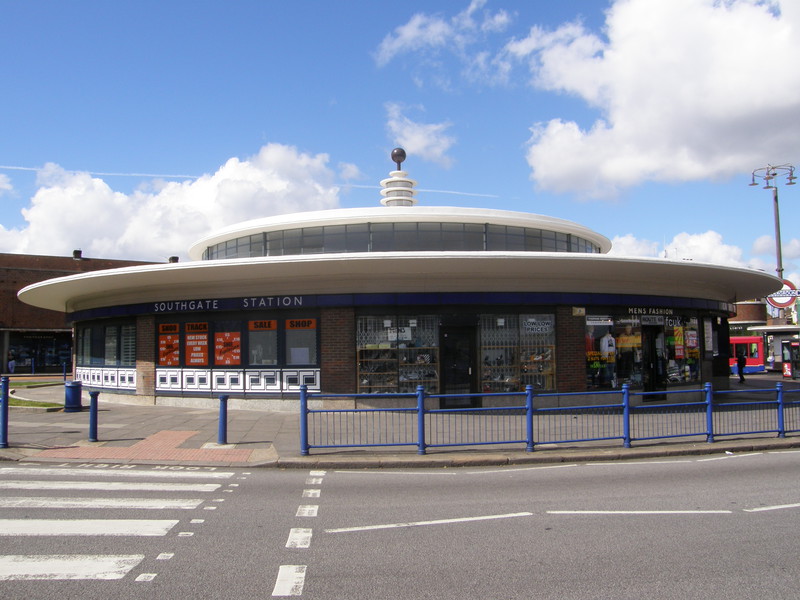
Tucked away in the northeastern corner of the Piccadilly line, Southgate station is my favourite Tube station. Architects tend to regard Arnos Grove as the epitome of Charles Holden's modernist designs, but for my own, personal taste, Southgate is the best. It's not so much modernist as futurist Art Deco (which I believe designers call Streamline Moderne, though don't quote me on that), and looks more like a flying saucer from The Jetsons than a Tube station. It's completely circular, with a white concrete roof jutting out above the shops like the brim of a hat, and on top of this hat is a small circular raised section that's lined with windows and topped off with a model of a Tesla coil (which is apparently one of those things that produces lightning in the science lab, but as far as Southgate is concerned, it looks like a stack of four miniature Southgate stations with a big black ball on top). This unwieldy description hardly does the building justice, as the whole thing hangs together in perfect balance, the roof seemingly hovering over the station itself (it is actually supported by a column in the middle of the ticket hall, like a huge concrete umbrella).
Not only is the station itself quite amazing, but it has a couple of truly futuristic bus shelters, one on each side of the station. Each shelter consists of a circular seat under a round roof, with a large Underground roundel on top, followed by a huge pole that shoots straight up into the sky, exploding into five lamps on a steel hoop like a firework display on a clear November night. There's a similar shelter up the line at Oakwood, but the design complements Southgate's main building perfectly, and I just couldn't stop taking photographs. As with all the Holden stations on this part of the line, Southgate is Grade II listed, and quite right too.
Arnos Grove
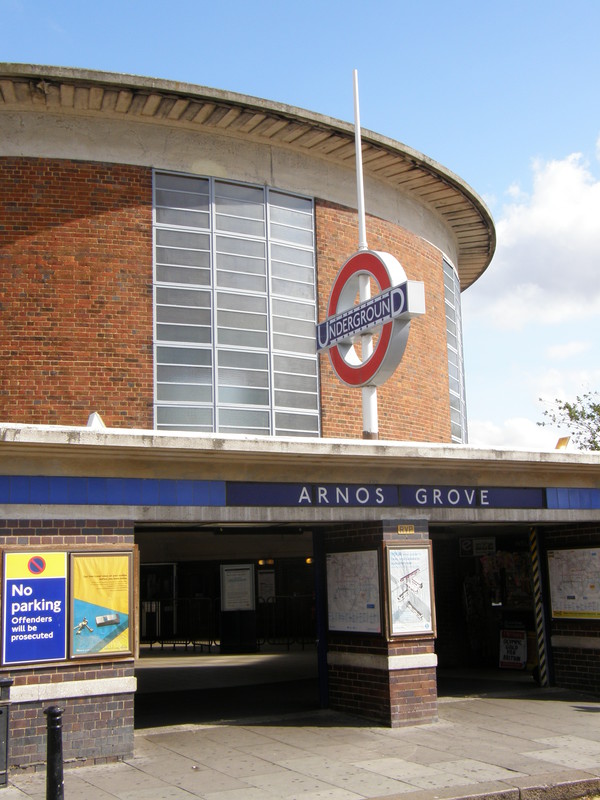
Also along the further reaches of the Piccadilly line, up past the North Circular Road, Arnos Grove station is a beautiful sight. It's similar in design to Chiswick Park, though it doesn't have a tower like Chiswick Park and is less hemmed in by the roads. The station sports a huge brick and glass drum that's capped by a concrete roof, while the station building proper is a low-rise one-storey structure with yet more glass windows. Of course, it was designed in 1932 by Charles Holden, who created most of the stations on this part of the line, and it's possible that Arnos Grove represents the cleanest and most attractive implementation of his modernist ethos; lots of his stations have tall structures towering above the station, with large windows to let the light into the ticket hall, but sometimes the results are more attractive than at other times, and at Arnos Grove, the balance of clean lines, airy ticket halls and geometric precision is pretty hard to beat. If you like modernism, it's well worth the pilgrimage, but don't take my word for it: a recent article in The Guardian called it the 'king, queen and all princes of a metro station', and it was named as one of our great modern buildings. It's easy to see why.
Hounslow East
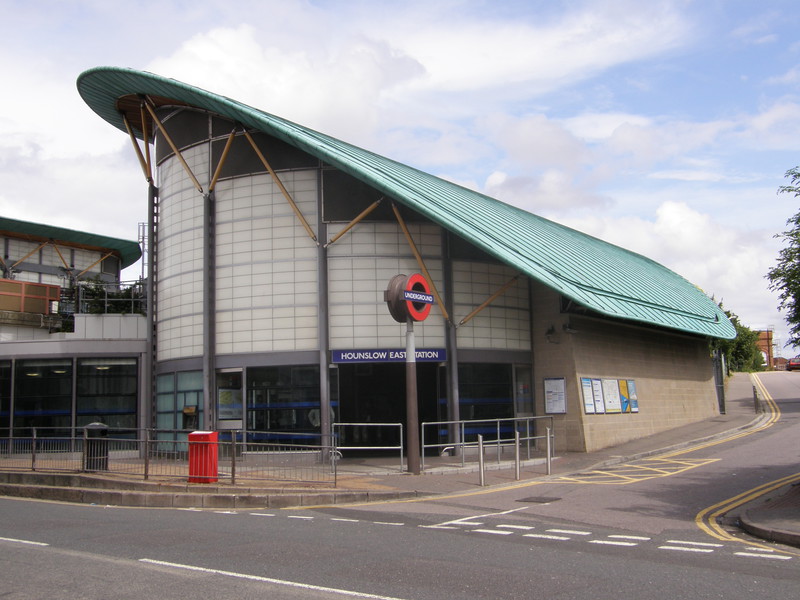
Hounslow East station is a complete surprise. Tucked away along the southwest Piccadilly line is an architectural masterpiece; although the original station was opened in 1909, replacing the nearby Hounslow Town station, the current station is ultra-modern and an absolute delight to behold. It has a sloping green roof curving off a round ticket hall with cream glass walls, and inside the roof is made of wood and the feeling of space is impressive; after walking through the less-than-thrilling suburbs of Hounslow, the modern shopping complex of Blenheim Centre is enough of a shock, but to follow it up with such a beautiful Tube station is a double-whammy that indicates Hounslow is on the up.
Barons Court
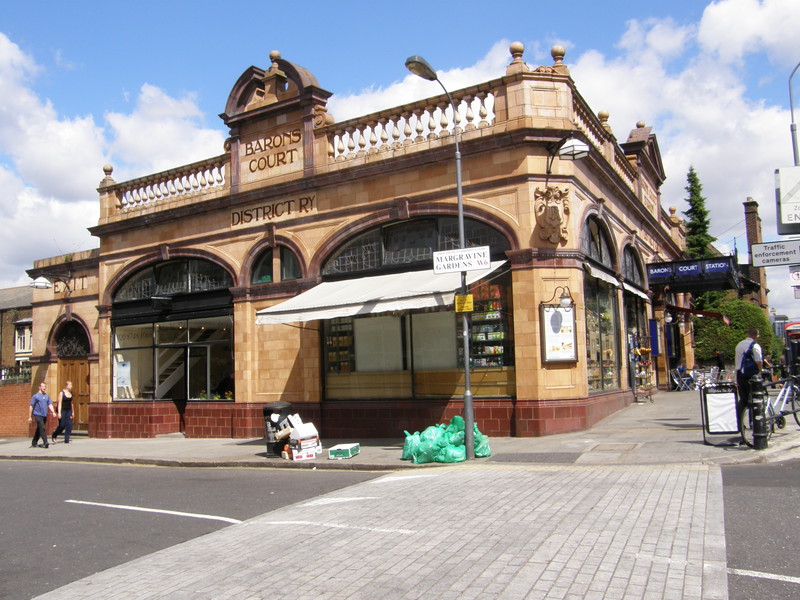
Sitting astride both the District line and the Piccadilly line, beautiful Barons Court station is a Grade II listed building, and it's easy to see why. Opened on and designed by Harry Ford (who also designed the Earls Court Road entrance to Earl's Court station, a couple of stops down the line), the station opening lagged somewhat behind the opening of the line, which dates from 1874. Back then this whole area was rural and was mainly made up of open fields and market gardens, so there was no need for a station in this area, but when the housing boom kicked in during the late Victorian period, a new station was opened to serve the District line. The timing was chosen well, as it was also built to serve the new Piccadilly line that opened slightly later on .
Canada Water
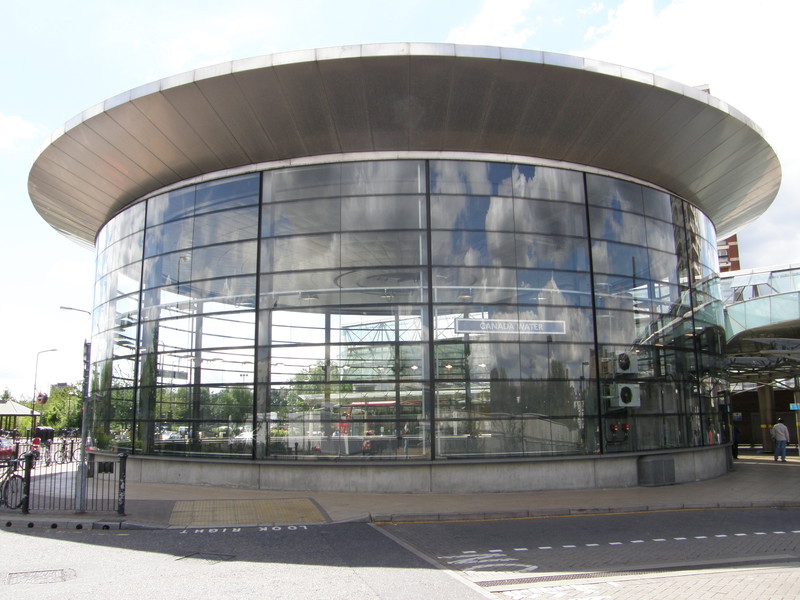
Canada Water station is on the newly extended Jubilee line, and it shows (it was built at the junction of the Jubilee and East London lines, though it owes a lot more to the former than the latter). Opened in 1999 and built on a derelict site that was formerly occupied by Albion Dock (part of the old Surrey Commercial Docks), the station building is based round a massive glass drum, 25m across, into which you descend to reach the platforms. Natural light floods the ticket hall in a nod to Charles Holden's high-ceiling designs on the District and Piccadilly lines, and it's a beacon of modernity in this previously quiet backwater of southeast London.
Newbury Park
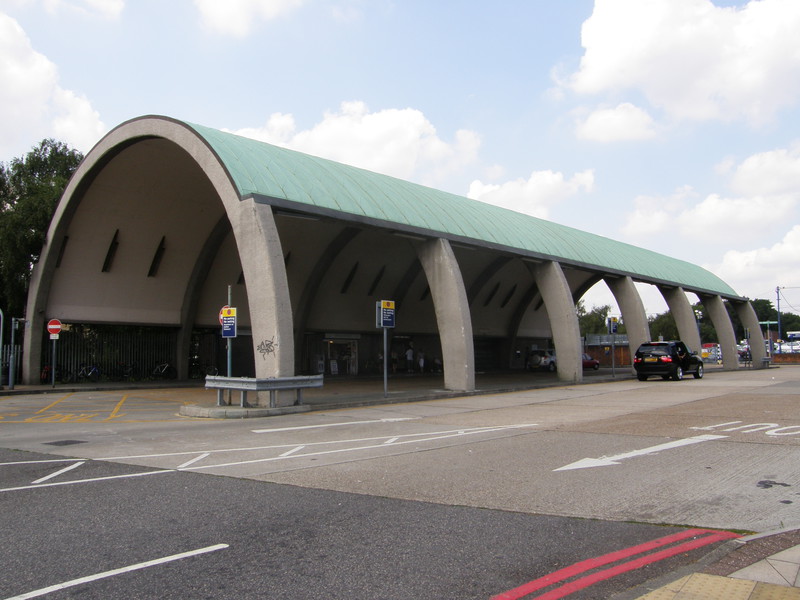
There's been a station at Newbury Park since 1903, when it was part of the Great Eastern Railway branch line from Woodford to Ilford via Hainault. This line was supposed to stimulate suburban growth in the same way as the Metropolitan line, but it never really took off and was eventually merged with the Central line as part of the New Works Programme. The new section of Tube tunnel that was built from Leytonstone via Gants Hill surfaced at Newbury Park, where it was joined to the existing Ilford-Woodford branch. The station itself lives in a cutting alongside the line, and the entrance to the Tube is a modest little doorway that takes you through to a small ticket office, but towering over this doorway is the stunning Newbury Park bus station, and it's this that makes Newbury Park such a great station to behold. Built in 1949 and designed by Oliver Hill, it's a huge barrel-vaulted concrete structure with a green copper-covered roof that manages to look both sturdy and lightweight at the same time. It won an architectural award at the 1951 Festival of Britain, and there's a small plaque to commemorate this on the left-hand side as you walk in; the award was well deserved, I must say.
Wembley Park
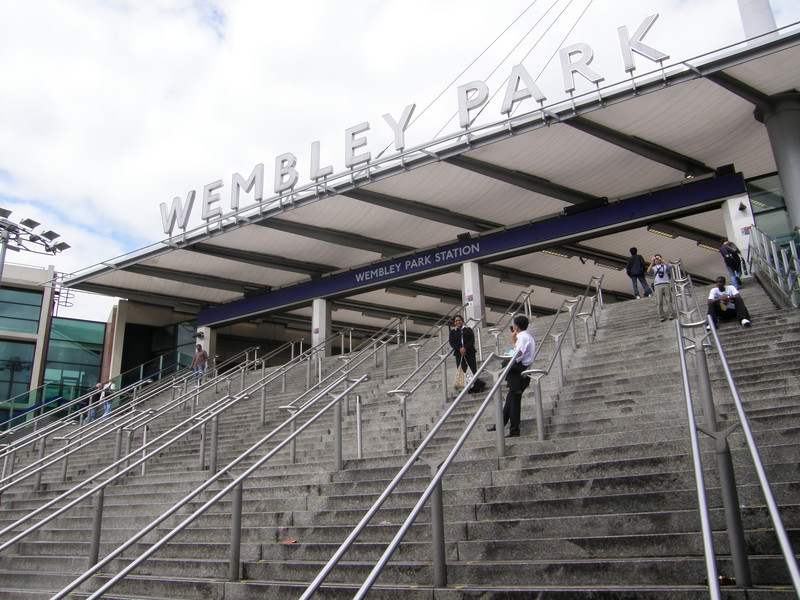
Sitting on both the Metropolitan and Jubilee lines, the station building at Wembley Park is impressive enough, but the really amazing part spills out of the southern entrance, down towards Wembley Stadium and the spiritual home of the nation's favourite sport. Obviously designed to enable huge crowds of screaming fans to get in and out as quickly as possible, a cascade of steps falls down from the entrance to a subway under the main road, taking the coloured scarves and party atmosphere off to the stadium below. I bet it's quite a sight on match day.
Loughton
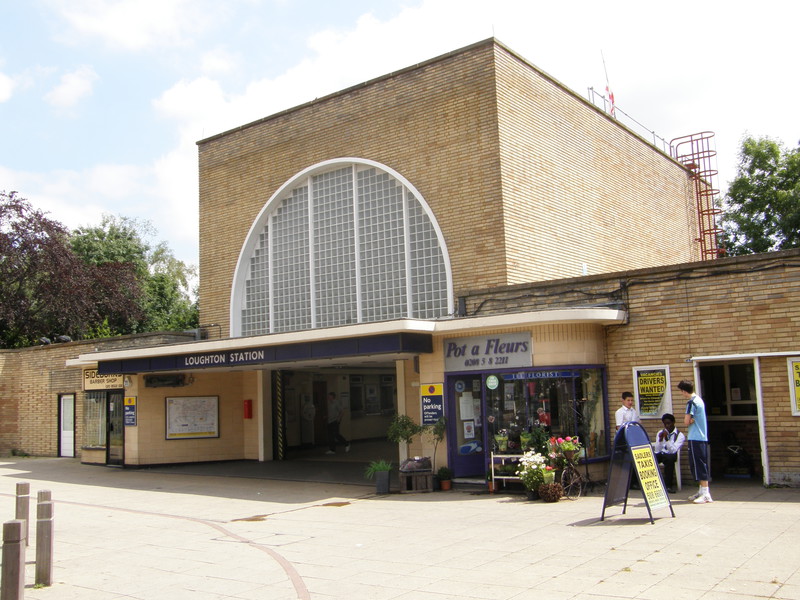
Out in the sticks along the eastern Central line, Loughton station is an architectural tour de force, which I wasn't expecting after the pleasant but hardly outstanding station buildings along this part of the Central line. A Grade II listed building, the current building dates from 1940, though the original Eastern Counties Railway station was opened in 1856. The new station was built in anticipation of the track joining the Central line, and was designed by John Murray Easton for the London and North Eastern Railway, who operated the line before it came under London Underground's control. The main part of the building is a large, square block with a very high ceiling and a huge arched window on the front face, letting light into the ticket hall in the traditional Tube manner. It's all rather attractive, and easily rates as the best station along the far eastern Central line.
South Ruislip
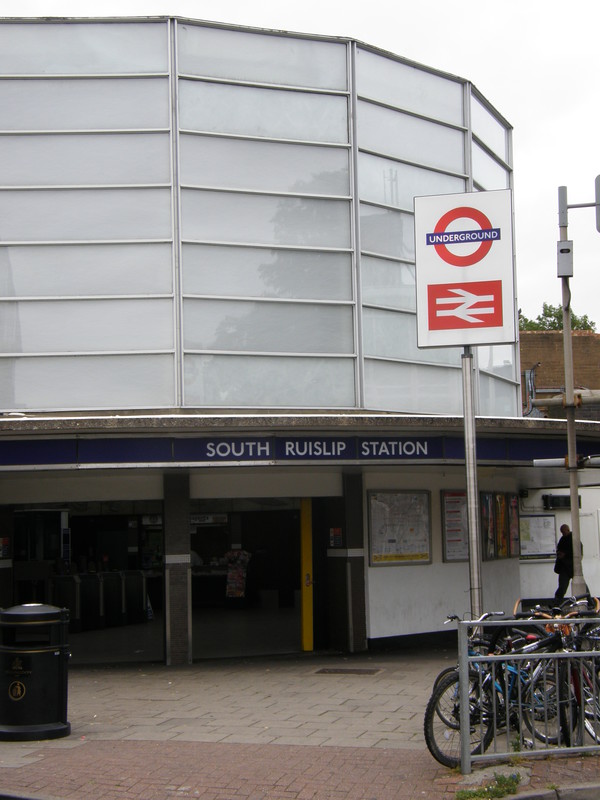
The housing around Northolt at the northwestern end of the Central line is not that thrilling, with rows of white terraces and a proliferation of bungalows being the order of the day, but South Ruislip station is a different matter altogether, particularly when compared with the other Ruislip stations on the Metropolitan and Central lines (in particular, West Ruislip and Ruislip Gardens are good examples of functional design rather than aesthetic). Topped by a large and very impressive brushed metal rotunda, the inside of the station features a concrete frieze by Henry Haig, and the whole building is pleasantly reminiscent of Holden's high-ceiling design at Chiswick Park, updated in buffed metal.
Chiswick Park
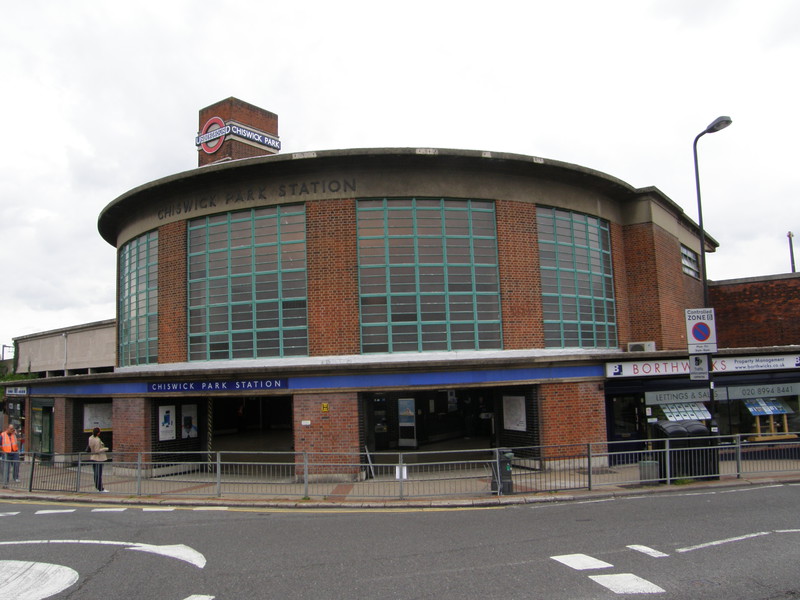
Sitting on top of a hill overlooking Turnham Green, Chiswick Park station is a corker. The original station opened on as part of what was then called the Metropolitan District Railway (now the District line), but between 1931 and 1932 it was rebuilt to a design by Charles Holden, the most significant station architect of them all. The station is dominated by its tall, semi-circular ticket hall, with large panels of clerestory windows that let light into the structure. Inside, the ticket hall is light and airy, a surprise for such a solid structure, and the icing on the cake is a huge brick tower, emblazoned with the London Underground roundel and the station name, which was built to make the station visible from Chiswick High Road. This is my favourite Holden station so far, and it makes the likes of Rayners Lane look positively industrial (though given Rayners Lane station's position on its busily eponymous road, its industrial appearance is well placed). Perhaps it's the round design that makes the difference, but whatever it is, I love it.
Chalk Farm
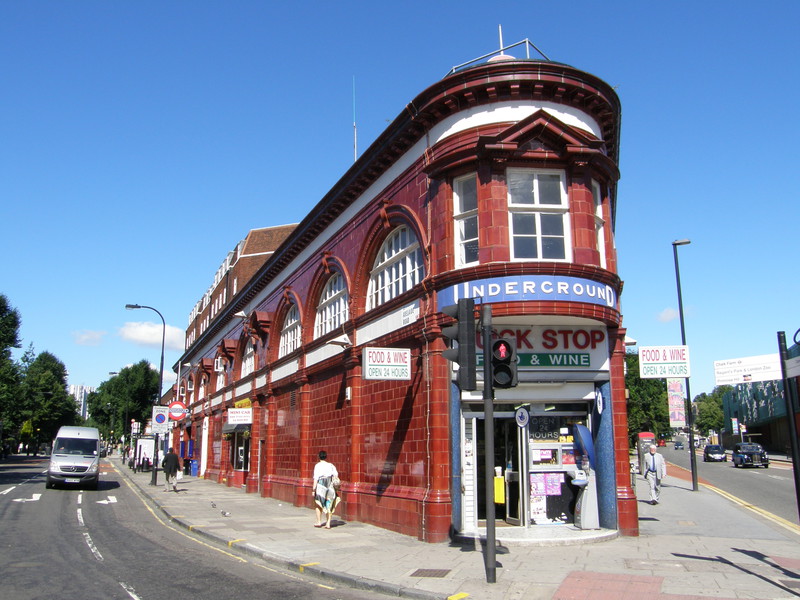
Chalk Farm station, on the Edgware branch of the Northern line, is a wedge-shaped building that's clad in the familiar Leslie Green ox-blood red terracotta tiles of the Charing Cross, Euston & Hampstead Railway. The narrow width of the wedge means that this station has the longest frontage of any Leslie Green station, with eight arched windows in a row, but more impressive to me is the fact that Madness were photographed in front of the station for the cover of their album Absolutely (they originally wanted to be photographed in front of Camden Town, but the traffic was just too crazy). The station was refurbished in 2005 and the terracotta has polished up nicely; it's now quite a sight, particularly when set against a deep blue sky without a cloud to be seen.
Southwark
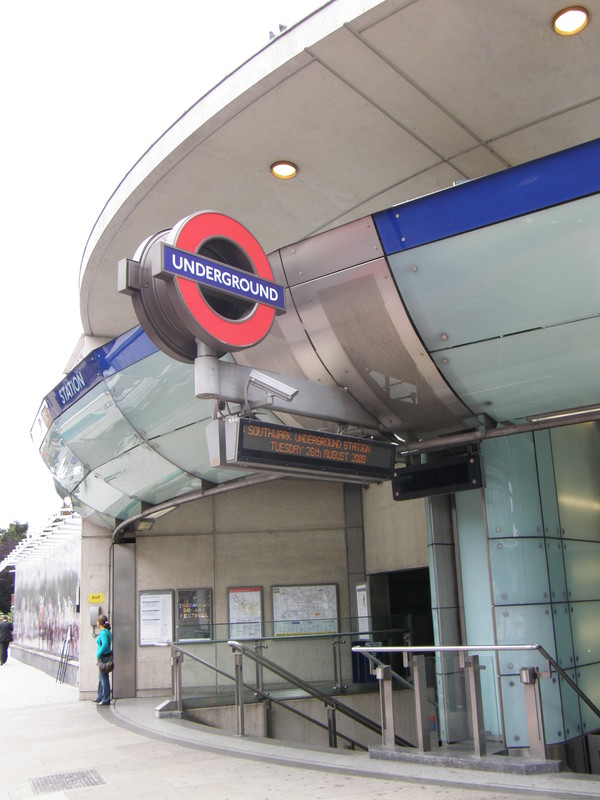
Heading east along the Jubilee line extension, Southwark station gives you your first glimpse of above-ground modern station architecture. The entrance is all curved glass and open spaces, and even though it's fairly small, it's perfectly formed. Like Leslie Green's ox-blood red stations, Southwark station has been designed to be built on, and once you know this, it perhaps looks a little lonely, stranded there on the corner with nothing to keep it company. Still, the station's beauty is again underground, this time in the intermediate concourse on the way down to the platforms, which is lined with a blue glass wall that's 40m long and made up of 660 individually cut pieces of glass. Designed by the artist Alexander Beleschenko, it's well worth seeking out.
Canary Wharf

The much-lauded Canary Wharf station is to the south of Canada Square, down a set of steps that gives a grand view of the open space in front of the station. The busiest Tube station outside of central London, and the busiest single-line station on the whole network, Canary Wharf is absolutely massive, though most of that bulk is below ground. Above ground, the Norman Foster-designed entrance is little more than a lovely steel-and-glass arch at the western edge of a wide open square, but you have to go inside to appreciate the splendour of this staggering building. You don't need a ticket to go down into the main entrance hall, so the detour is well worth the effort (and there are toilets down here, too, which might be useful after all that walking). Canary Wharf is regarded as the centrepiece of the Jubilee line extension, and it's been a source of national pride since it opened in 1999; the praise is well deserved, I have to say.
Osterley
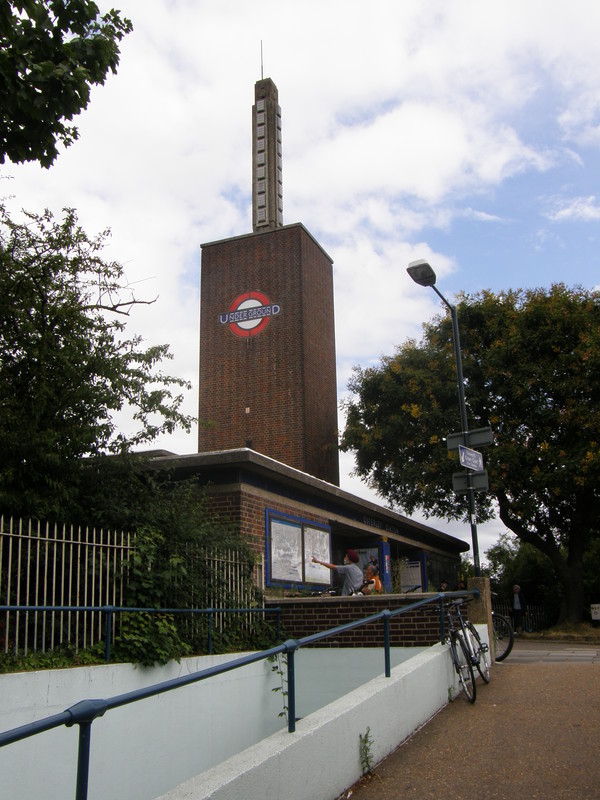
Osterley station – on the Piccadilly line to Heathrow – is an interesting Charles Holden building from 1934, when this new station was opened to replace the old Osterley & Spring Grove station a few hundred yards to the east. It is dominated by a huge brick tower topped with an obelisk made from concrete, which itself is crowned by a spike (though I think this might be a radio antenna, as it doesn't seem to appear in period photographs of the station opening). The station building is fairly low key and without the tower it would be pretty hard to identify as a Tube station, but the tower and obelisk, complete with the Underground roundel, are really distinctive and instantly cry out 'Tube station'... which, I guess, is the point.
West Acton
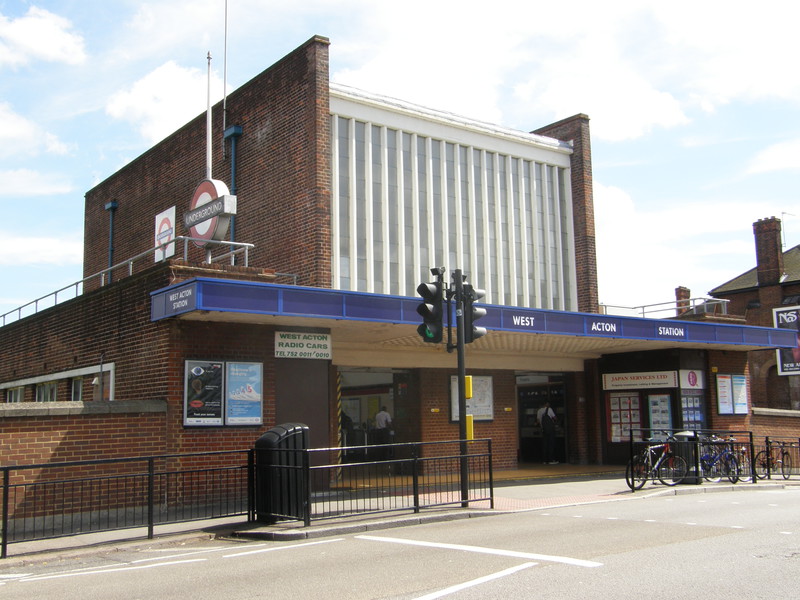
In zone 3, perched high above the western half of the Central line, West Acton station is an imposing sight, surrounded as it is by Mock Tudor estates and unassuming suburbia. Dating from 1923, a rectangular glass-fronted tower rises out of the station, looking for all the world like the front of a huge factory, with solid, red brick sides and the Underground roundel on a pole to the left. The ticket hall is extremely well lit by light coming in through the high glass slats, and the overall effect is very pleasing.
Willesden Green
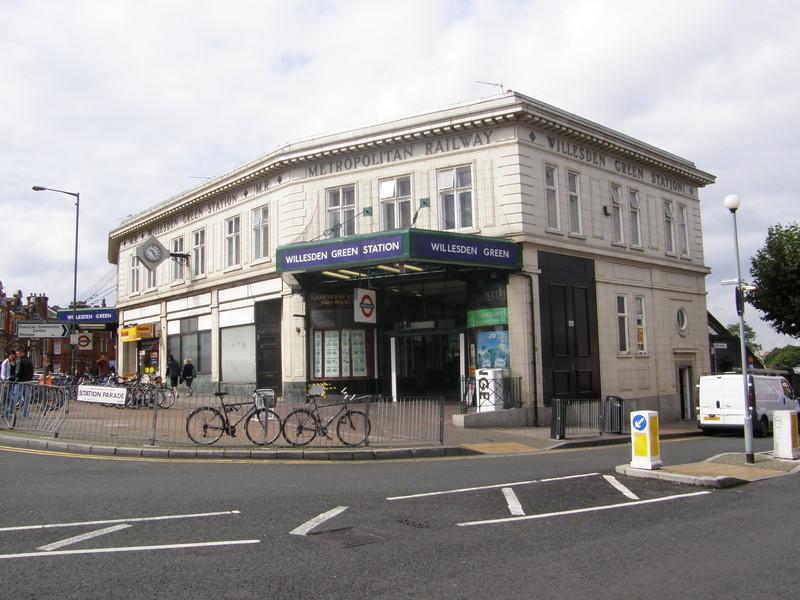
The suburbia along the northern stretches of the Jubilee line doesn't make for the most scintillating walking in the world, but Willesden Green station is a cracking building. The original Metropolitan Railway station was opened in 1879, but the current building dates from the station reconstruction of 1925, when the company's architect, CW Clark, designed a magnificent marble-white building with 'Metropolitan Railway Willesden Green Station' emblazoned round the eaves that's as grand today as when it was unveiled. It's deservedly a Grade II listed building.
Stratford
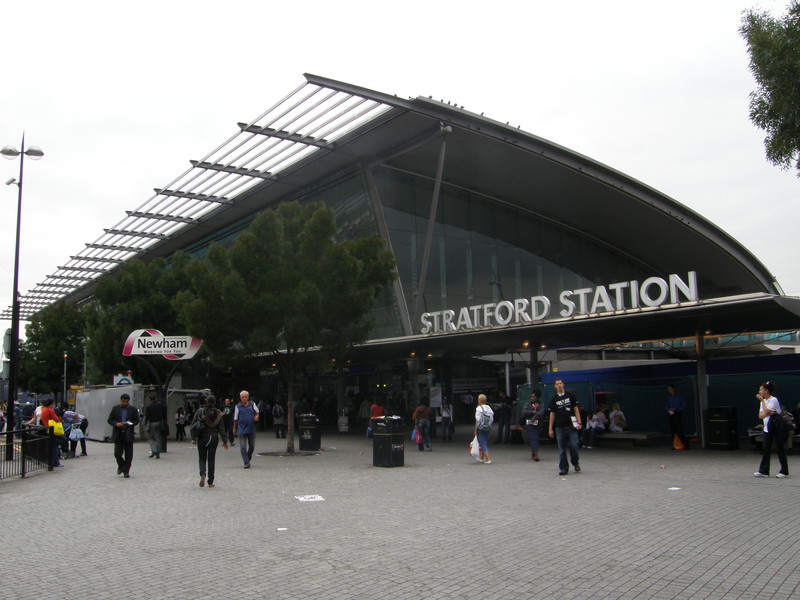
Although Stratford started out life on the Central line, it was the arrival of the Jubilee line in 1999 that totally transformed things round here, and nowhere is that more evident than in the large transport junction just below the Olympic park. There's a huge bus station here, and it was from this point in 1832 that Walter Hancock operated the first fee-charging London to Brighton bus service (a first for Britain) in his steam-powered ten-seater bus The Infant. The train station next door is even bigger, and looks more like an aircraft hangar than a train station, though it's an architectural aircraft hangar if ever there was one; the roof curves elegantly away from the entrance, and it's well worth poking your head inside to look at the gleaming ceiling. Even though Stratford station was built well before we started bidding for the Olympics, you get the feeling that this is what this station has been waiting for; it's huge, it's in the middle of nowhere, and now it's time to flex its muscles.
Farringdon
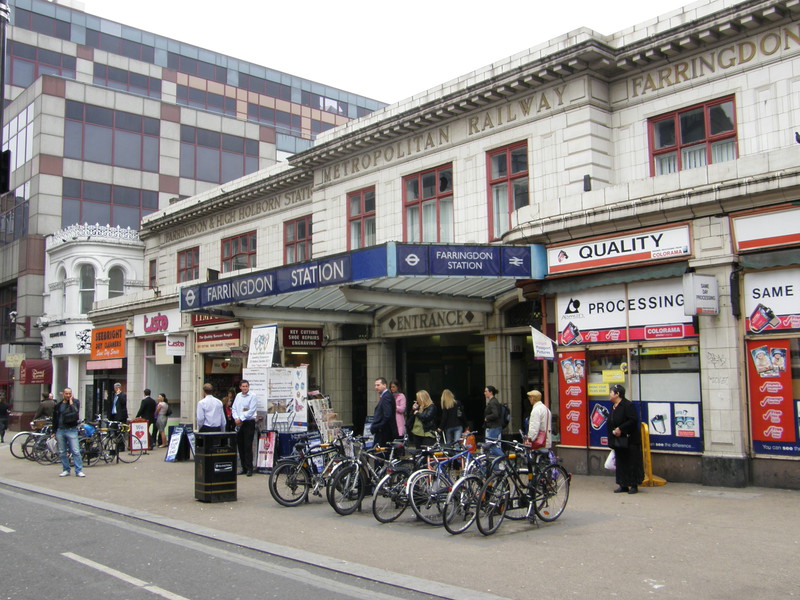
Farringdon station is just along Cowcross Street from Smithfield market, and this is where the real history of the Tube begins, for the oldest underground railway in the world was opened here on , joining Paddington to Farringdon along the Metropolitan line (though these first tunnels are actually used by the Hammersmith & City line these days). The station itself looks quite similar to Aldgate station, but being the original City tube station, it's just that little bit more impressive.
Hillingdon
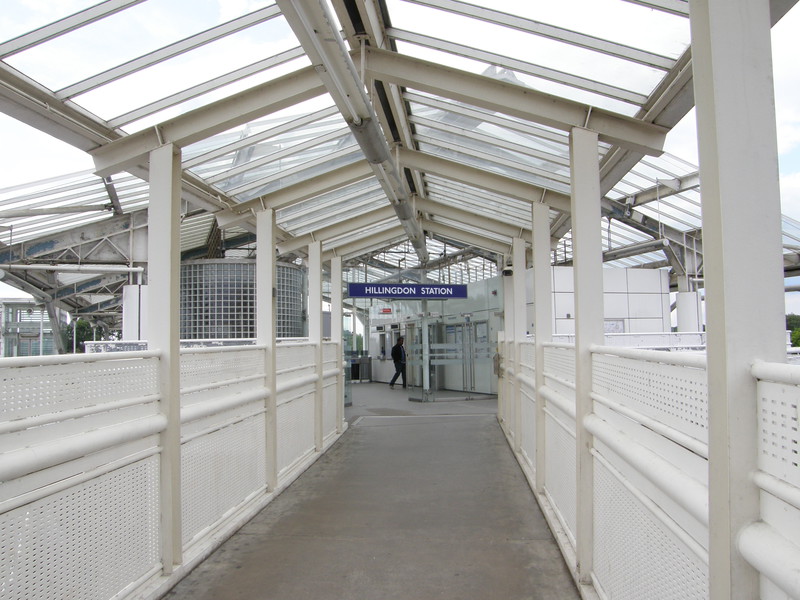
To appreciate Hillingdon station, out there on the northwestern edges of the Metropolitan and Piccadilly lines, you either need to be driving along the A40, or you have to cross to the other end of a long walkway. Not only are the views from the walkway impressive (though only in the sense that the A40 is a scary and noisy beast below you, and is therefore worth staring at, if only in terror), but the station is delightful. The original Hillingdon station, which was opened a little bit further north along the line in 1923, was the last new station to be built on the Metropolitan line; the new station, however, was opened in 1992, and that same year it won the Underground Station of the Year award. The station is light and airy, being made of glass and steel, and it's a strange place to find such a delightful piece of architecture, perched over the rumbling bowels of the A40, and seemingly miles away from anywhere.
Rayners Lane
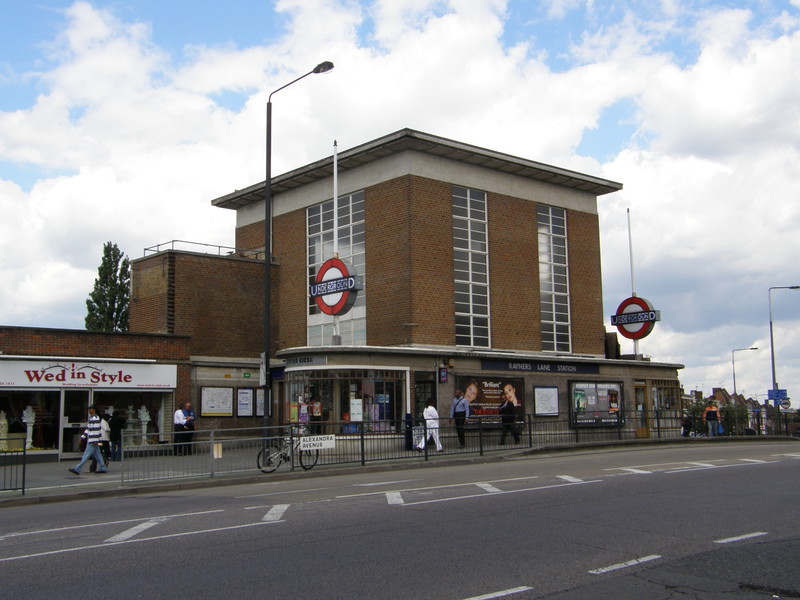
Although I've chosen Rayners Lane for my final station, I could just as easily have chosen Eastcote, Sudbury Hill, Sudbury Town, Alperton, Oakwood, Harrow-on-the-Hill, Northfields or a number of other stations, as they all have a similar design: a huge, rectangular glass-and-brick block looming above the station entrance, forming a wonderfully spacious ticket hall and screaming 'Tube station' to all around. Rayners Lane on the junction of the Metropolitan and Piccadilly lines is a particularly good example of the oeuvre, with its large brick tower looming over the busy A4090, complete with the same slatted glass windows that the other stations boast (not surprisingly, as most of these were redesigned by Charles Holden in the 1930s in his signature style). It fits its surroundings well, as this is a brash, loud main road, and this clearly requires a different kind of finesse to more elegant Holden creations like Arnos Grove or Chiswick Park, particularly as the station is just down the road from the old Art Deco cinema, now the European Centre for Zoroastrianism. It's an interesting area, if a little noisy from the traffic, and Rayners Lane station fits right in.